site search
online catalog
“WE’LL TRY FIGHTING FOR A WHILE.” SCARCE COMPANY FLAG WITH MUNFORDSVILLE BATTLE HONOR: COMPANY K, 74th INDIANA – ONE OF THE REGIMENT’S TWO COMPANIES FIRST TO SEE BATTLE, UNDER JOHN T. WILDER
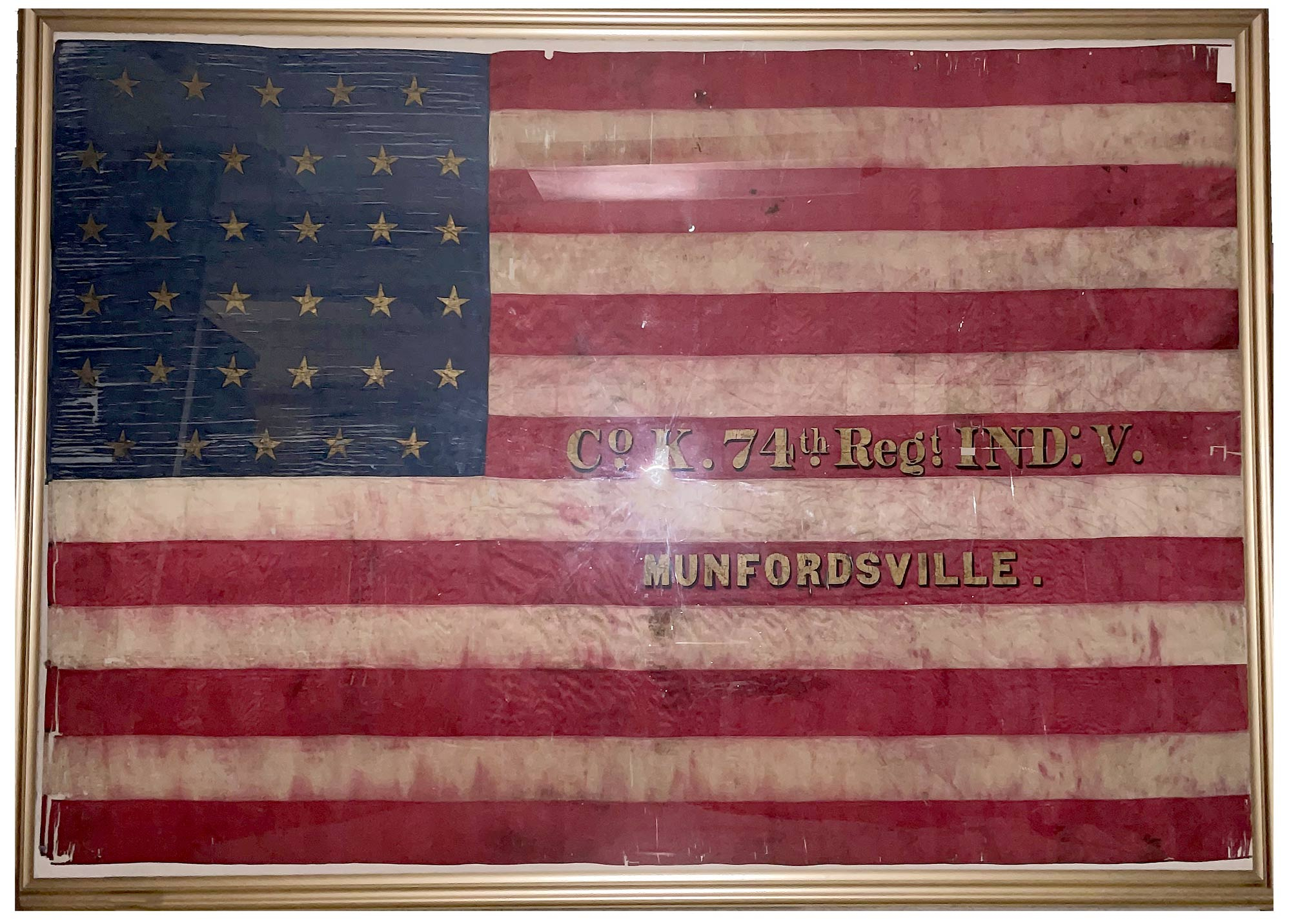
Hover to zoom

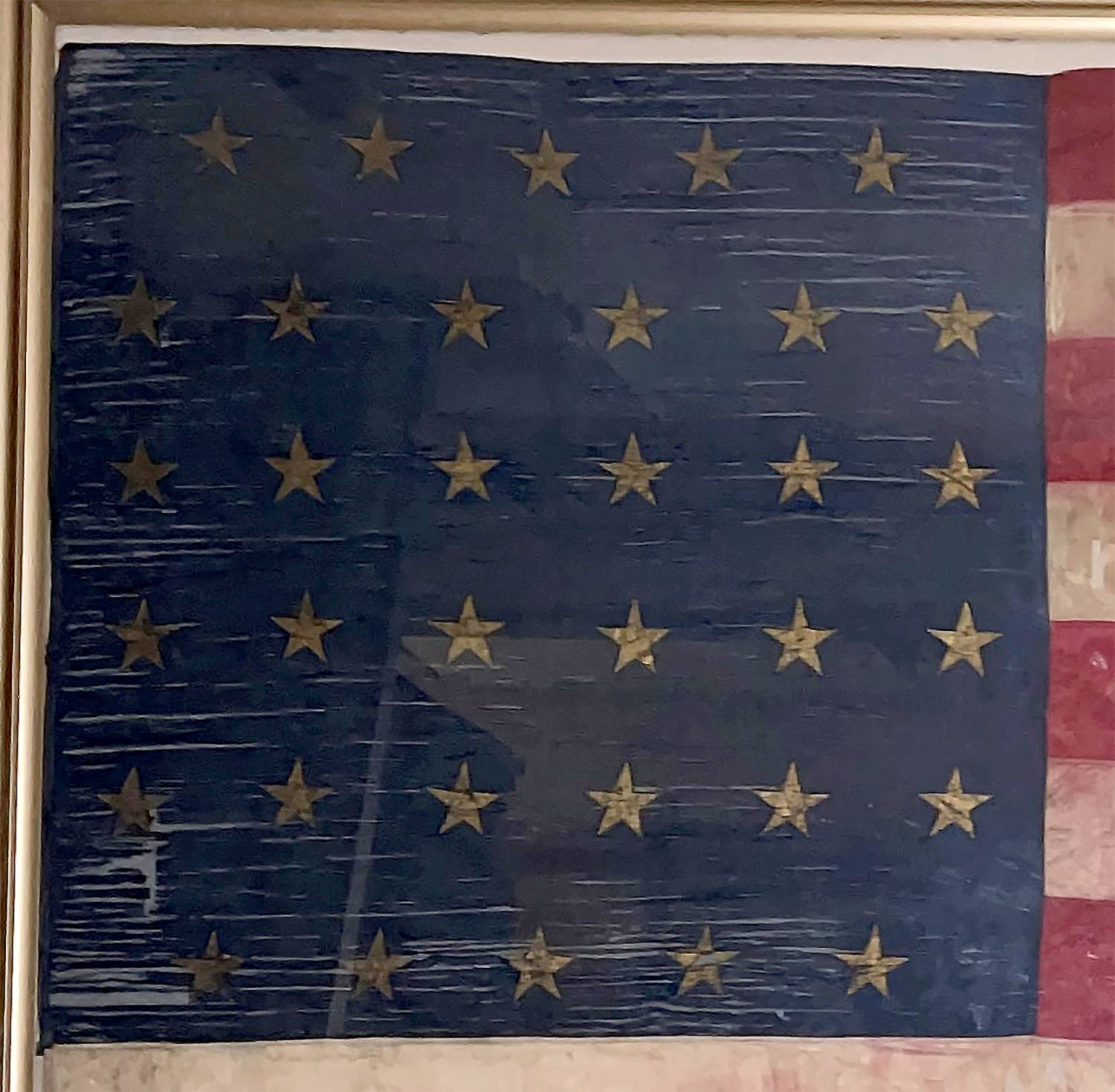
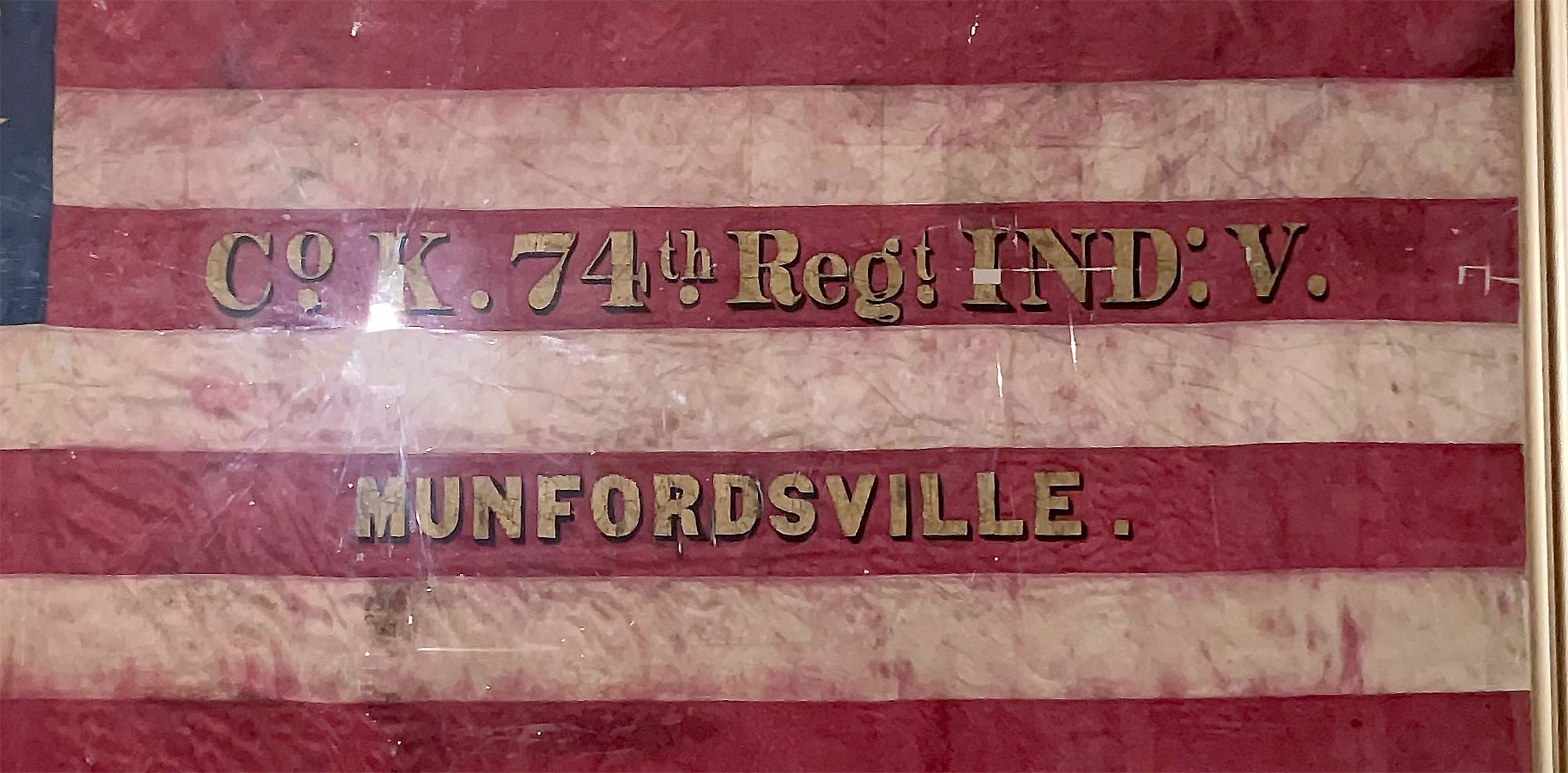
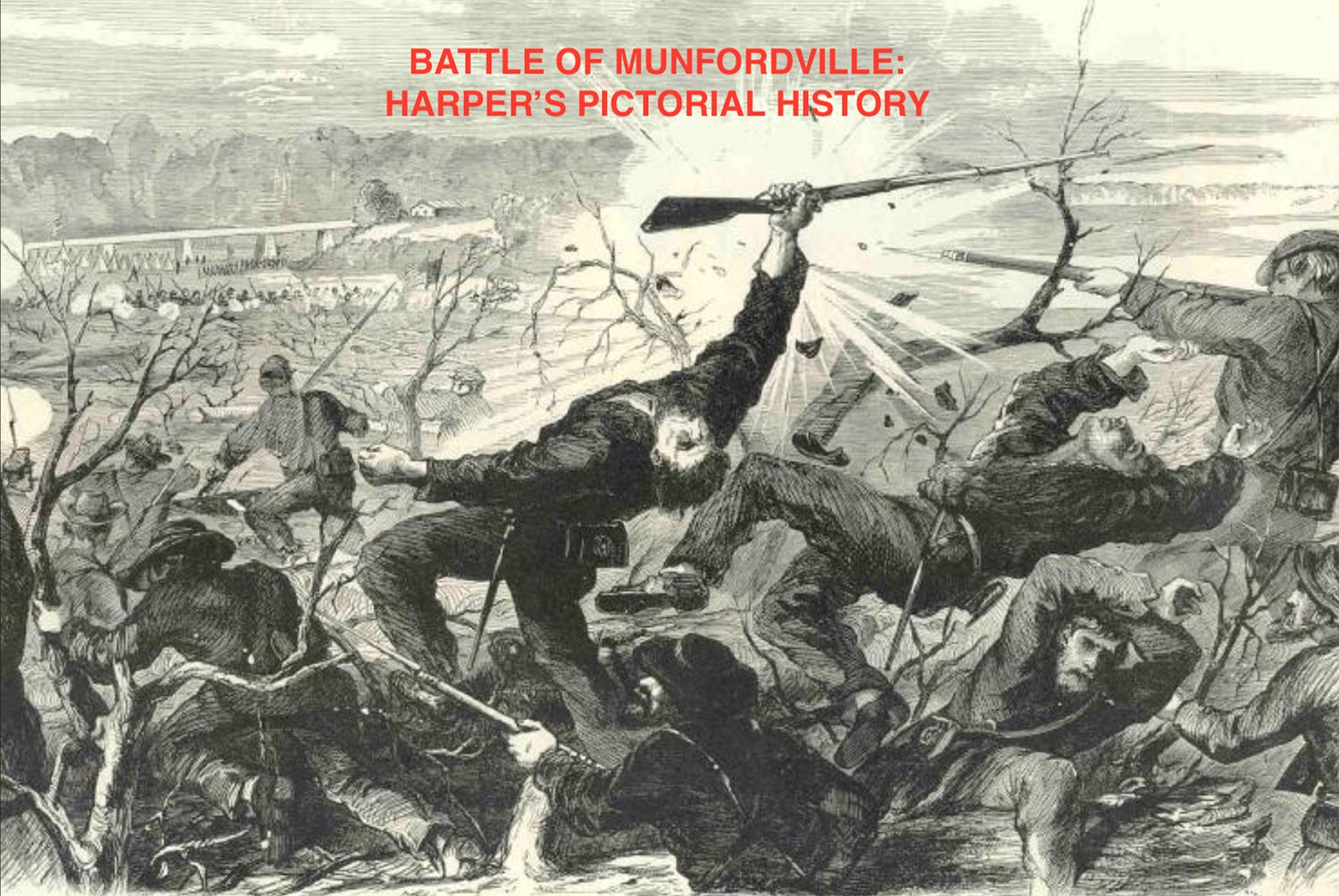
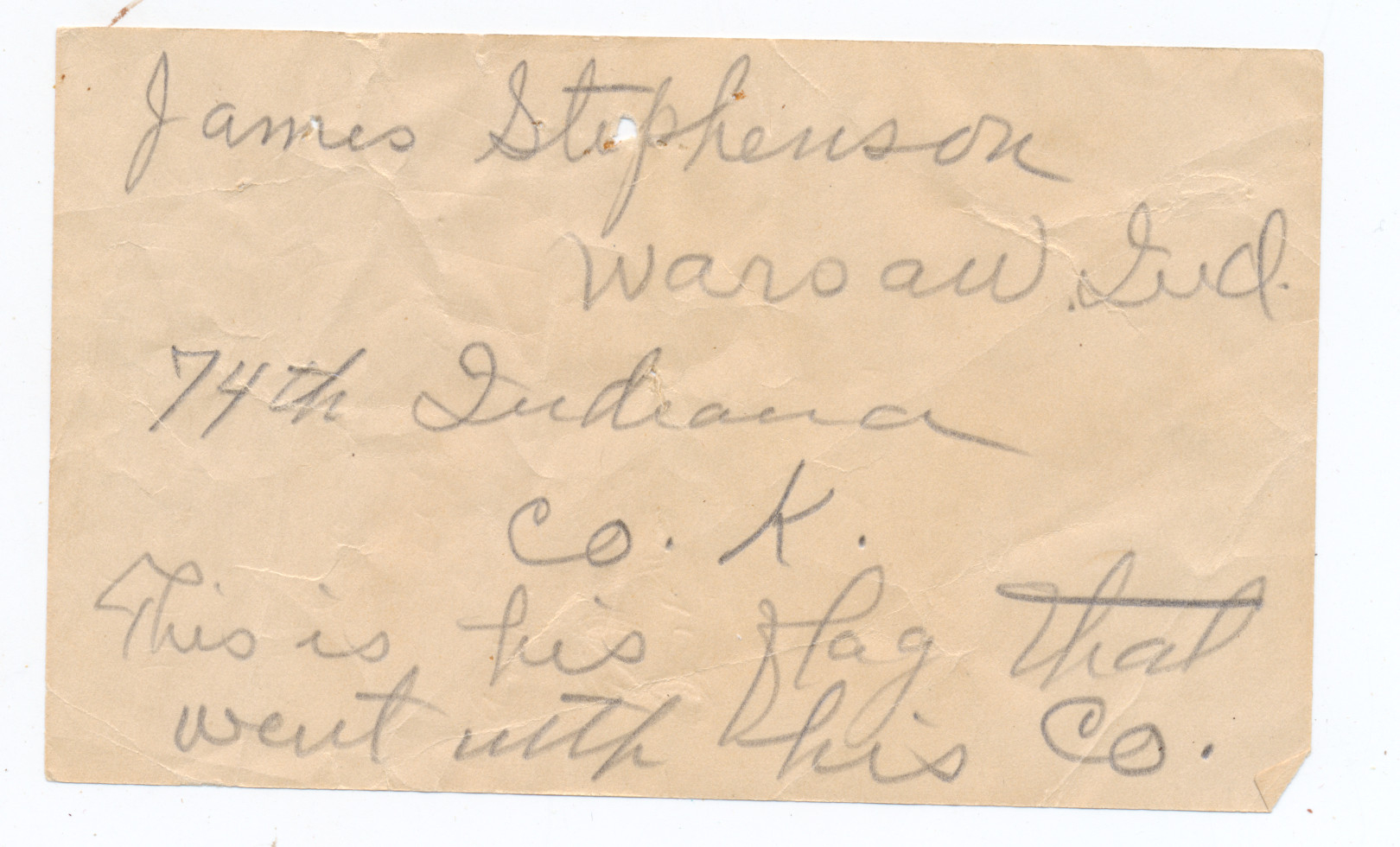
$37,500.00 SOLD
Quantity Available: None
Item Code: 1179-026
It’s very unusual for a company flag to have a battle honor- but it must have been a point of pride for Company K, one of the two companies of the 74th Indiana to have seen battle before the rest of the regiment. The regiment had been organized at Fort Wayne in August 1862, with eight companies mustering in for 3-years’ service at Indianapolis on Aug. 21, and joining the Army of the Ohio on Sept. 5 at Louisville. Companies C and K in the meantime remained behind at Indianapolis to fill up their ranks and departed the state on Aug. 27 to join the regiment, heading south by rail to Louisville in company with several hundred recruits for the 17th Indiana under charge of Col. John C. Wilder, of Lightning Brigade fame. At Louisville Wilder was ordered to bring all the men with him south to Munfordsville (more correctly “Munfordville” but also called “Mumfordsville” in period accounts,) a station on the Louisville and Nashville Railroad, to reinforce the garrison guarding the railroad bridge over the Green River in the face of the Confederate “heartland offensive,” with columns under Kirby Smith and Braxton Bragg pushing north into Kentucky and Buell’s army in pursuit.
As ranking officer, Wilder became commander of the post on his arrival, worked on strengthening its defenses, gathering troops and supplies, and scouting. B.H. Dunnick of Co. K recalled, “being called into line every night to swap shots with our southern foe…” in the days before the battle and making a night-time train run with the company to retrieve fifty barrels of salt from a station six miles south of the town, just before the arrival of some Union reinforcements from Louisville and a brigade of Mississippi troops under Gen. J.R. Chalmers, who demanded the immediate surrender of the post. By Peter Cozzens’s account, Wilder simply replied, “We’ll try fighting for a while,” and the Union defenders then repulsed Confederate assaults, inflicting some 283 Confederate casualties while losing just 37, among whom were two members of Company K, killed in the fighting.
“We spent the day in building additional fortifications and in lining up generally for action. Saturday night about twelve o'clock Co. K (74th Reg.) was ordered out on the Nashville Pike one-half mile south and was deployed in a field adjoining the pike. We could hear the enemy's artillery and wagon trains coming over the stone road for several miles distant. About daylight Sunday morning they had arrived within shooting distance and we could easily hear the commands given to the infantry. Soon a heavy line of skirmishers moved across the pike and bounded over the fence into our field and advanced toward our little bunch. Things looked very inviting about that time. Our captain ordered Co. K to fall back over the fence into the timber. So over the fence we went, then halted and exchanged a few shots. We then moved back inside of our works. Co. K was hastily ordered to take position east of our heaviest fort. By this time the battle was on in dead earnest. The company held its position nobly. Col. Morgan, then captain of Co. K, gallantly urged the men to use ammunition freely. Co. K at this point narrowly escaped capture by hurriedly falling back to the fort and taking position in a ditch which extended around the fort. Just at this time the enemy made a desperate charge along our whole line of works. They were repulsed with heavy loss in the charge, and they fell back and soon came again four columns deep but were repulsed again. Notwithstanding this, they came soon again with a determined effort to carry our works but they failed again, and with terrible loss. They then moved back out of range giving up the task for the time being. Our losses were small compared with the enemy's loss” (Dunnick.)
Chalmers’s attack, spurred by erroneous reports Union forces might be withdrawing, was unauthorized, but Brass ordered a follow-up attack on the post as a matter of morale and two days later Wilder and the garrison, by then some 4,000, surrendered on generous terms, paroled to await exchange and escorted to Union lines, Companies C and K of the 74th included.
The reunited regiment went on to have and extensive campaign and combat record in the 14th Army Corps, including Chickamauga, where it is said to be among the first engaged and last to leave the field. Dyer summarizes their service after reuniting as follows: Operations against Morgan December 22, 1862, to January 2, 1863. Boston December 29, 1862. Moved to Nashville, Tennessee, January 13, 1863, then to Murfreesboro, and duty there until June. Expedition toward Columbia March 4–14. Tullahoma Campaign June 23-July 7. Hoover's Gap June 24–26. Tullahoma June 29–30. Occupation of middle Tennessee until August 16. Passage of the Cumberland Mountains and Tennessee River and Chickamauga Campaign August 16-September 22. Battle of Chickamauga, September 19–21. Siege of Chattanooga, September 24-November 23. Before Chattanooga September 22–26. Chattanooga-Ringgold Campaign November 23–27. Orchard Knob November 23–24. Missionary Ridge November 25. Pursuit to Ringgold November 26–27. Demonstration on Dalton, Georgia, February 22–27, 1864. Tunnel Hill, Buzzard's Roost Gap, and Rocky Raced Ridge, February 23–25. Atlanta Campaign May 1-September 8. Demonstrations on Rocky Faced Ridge May 8–11. Battle of Resaca May 14–15. Advance on Dallas May 18–25. Operations on Pumpkin Vine Creek and battles about Dallas, New Hope Church, and Allatoona Hills May 25-June 5. Operations about Marietta and against Kennesaw Mountain June 10-July 2. Pine Hill June 11–14. Lost Mountain June 15–17. Assault on Kennesaw June 27. Ruff's Station July 4. Chattahoochee River July 5–17. Peachtree Creek July 19–20. Siege of Atlanta July 22-August 25. Utoy Creek August 5–7. Flank movement on Jonesboro August 25–30. Battle of Jonesboro August 31-September 1. Lovejoy's Station September 2–6. Operations against Hood in northern Georgia and northern Alabama September 29-November 3. Kingston, Georgia, November 8 and 10. March to the sea November 15-December 10. Siege of Savannah December 10–21. Campaign of the Carolinas January to April, 1865. Fayetteville, North Carolina, March 11. Averysboro March 16. Battle of Bentonville March 19–21. Occupation of Goldsboro March 24. Advance on Raleigh April 10–14. Occupation of Raleigh April 14. Bennett's House April 26. Surrender of Johnston and his army. March to Washington, D.C., via Richmond, Virginia, April 29-May 19. It then took part in the Grand Review on May 24 and mustered out June 9 at Washington. It had lost 5 officers and 86 enlisted men killed or mortally wounded in battle, plus scores more wounded, and 2 officers and 181 enlisted men died of disease.
The flag is accompanied by an old family note in pencil on piece of paper, once pinned to the flag, reading: “James Stephenson / Warsaw Ind./ 74th Indiana / Co. K./ This is his flag that/ went with his co.” A two-page handwritten letter from the dealer who originally brought this to market says that he got it directly from the Stephenson family. A note from the dealer on the back of a copy Dyer’s summary of the regiment’s service mentions the family note accompanying the flag. Stephenson (1839-1907,) was a resident of Leesburg, IN, when he joined for duty and enrolled at Warsaw and mustered as a sergeant in Co. K 8/27/62. He was in the Battle of Munsfordville, being listed as paroled 9/17/62. He is carried on all muster rolls as present after that except with the notation that he was at home sick at Warsaw from 10/27/62, but returned to be included as present on the Nov.-Dec. 1862 muster roll. This places him with the regiment for all their major engagements. He was promoted to First Sergeant 4/1/63 and was promoted to 1st Lieutenant 8/1/64, mustering in 9/15/64 with rank from 9/5/64: just before their operations against Hood in Alabama and the March to the Sea. He mustered out with the regiment at Washington 6/9/65. In 1860 he had been working on his parents’ farm and after the war was a farmer as well, though serving as a constable by 1907, when he died suddenly of a heart attack. As an officer in the company, he was a likely candidate for custody of their flag.
The flag is substantially intact with just the very end of the fly, likely only the hemmed edge, missing. The canton had narrow horizontal splits and the fly had similar vertical splits, but was 90% intact, with very few spots of missing silk, and those very small. The flag is accompanied by extensive 1993 conservation reports from Textile Preservation Associates. Everything was cleaned, stabilized, and framed for display. Interested parties are invited to consult the treatment report that details the original condition of the flag, includes line drawings, details fo the treatment, and directions for exhibition, transportation and storage.
Leading edge 71” and fly 103” U.S. stars and stripes flag made of one layer of silk, canton 38” by 37” with vertical middle seam and 34 3-1/4” stars applied to both sides in gold with brown shading and yellow line around the perimeter, arranged 5-6-6-6-6-5. The end of the fly edge is missing so it is unclear how it was finished. The leading edge has four pairs of ¾ ribbon for attachment plus evidence of tack holes. The unit designation and battle honor were applied in gold pigment on both sides, reading backwards on the reverse. The fourth stripe reads “Co. K 74th. Regt. IND: V.” in Roman letters 3 ½” and 2 1/2” high. The sixth stripe reads “MUNFORDSVILLE” in 3” shaded block letters.
We might also remark that before the two companies rejoined their comrades in 1862, the regiment was credited with participation in the Battle of Perryville, a tactical victory for Bragg, but the highwater mark of his attempt to take Kentucky. The flag with its prominent battle honor may well have been a response to guying from the rest of the regiment for having missed the battle as still paroled prisoners, though the regimental history confesses they were merely “eye-witnesses of the fearful fight.” This flag, then, might well be something of a “take that,” reminder that their experience, though involving a surrender at the end, had been a real fight, with two of their comrades dead to prove it.
This is a great looking flag, from a fighting unit, with a lot of history behind it. [sr] [PH:L]
~~~~~~~~~~~~~~~~~~~~~~~~~~~~~~~~~~~
THIS ITEM, AS WITH ALL OTHER ITEMS AVAILABLE ON OUR WEB SITE,
MAY BE PURCHASED THROUGH OUR LAYAWAY PROGRAM.
CLICK HERE FOR OUR POLICIES AND TERMS.
THANK YOU!
Inquire About “WE’LL TRY FIGHTING FOR A WHILE.” SCARCE COMPANY FLAG WITH MUNFORDSVILLE BATTLE HONOR: COMPANY K, 74th INDIANA – ONE OF THE REGIMENT’S TWO COMPANIES FIRST TO SEE BATTLE, UNDER JOHN T. WILDER
Most Popular
Historical Firearms Stolen From The National Civil War Museum In Harrisburg, Pa »
Theft From Gravesite Of Gen. John Reynolds »
Selection Of Unframed Prints By Don Troiani »
Fine Condition Brass Infantry Bugle Insignia »
British Imported, Confederate Used Bayonet »
Scarce New Model 1865 Sharps Still In Percussion Near Factory New »
featured item
EXCELLENT LARGE, ORIGINAL FRAMED OIL PAINTING OF 20TH MAINE’S JOSHUA LAWRENCE CHAMBERLAIN BY MICHAEL GNATEK
This is an original oil on canvas portrait of Major General Joshua L. Chamberlain of the 20th Maine Infantry done by the late Michael Gnatek. Mr. Gnatek received his art training at Yale University and in the Marine Corps, where he was a combat… (10-1968). Learn More »


